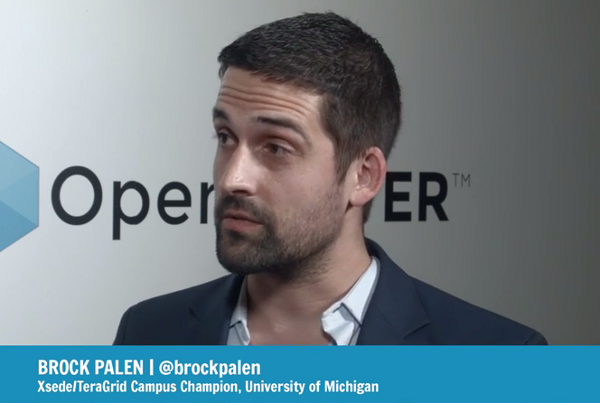 NEWS
NEWS
 NEWS
NEWS
 NEWS
NEWS
Big Data is a powerful technology for business, but that power is even more important in the world of science. While business collects data on customers and processes, science can create staggering amounts of information with a single experiment. Often, that data can take years to work through by conventional means. Big Data processing can turn years into months or weeks. One of the latest tools science has taken up to handle their Big Data needs is machine learning.
To gain some insight on recent machine learning programs, David Floyer (@dfloyer), cohost of theCUBE, from the SiliconANGLE Media team, spoke to Brock Palen at the OpenPower Summit 2016 convention. Palen is the director of Advanced Research Computing Technology Services at the University of Michigan.
The conversation started as Palen described the system. He said the new platform was called ConFlux and represented a joint project with IBM. Its purpose was to be a platform for data-driven computational physics. The system, he said, was a way to couple machine learning with traditional computational physics.
The physics in question, Palen explained, had to do with modeling events like weather, blood flow, materials combustion and other things. These events, he continued, were very hard to model even with today’s powerful machines. By adding machine learning to large-scale simulation, they could guide and improve existing computational physics.
ConFlux was designed around handling a lot of data. It can access data in several ways, Palen said, so they won’t need to move huge chunks of data around as often. This also reduces the amount of shadow data duplicated in dark corners of the system.
Beyond the immediate benefits, Palen described the vision of ConFlux as a platform of resources to support a diverse group of researchers. Today, they work with several thousand people, but in the future they expect to touch many more. ConFlux is something they hope to build and grow to create the best science they’ve ever had.
Watch the full interview below, and be sure to check out more of SiliconANGLE and theCUBE’s coverage of OpenPOWER Summit.
Support our open free content by sharing and engaging with our content and community.
Where Technology Leaders Connect, Share Intelligence & Create Opportunities
SiliconANGLE Media is a recognized leader in digital media innovation serving innovative audiences and brands, bringing together cutting-edge technology, influential content, strategic insights and real-time audience engagement. As the parent company of SiliconANGLE, theCUBE Network, theCUBE Research, CUBE365, theCUBE AI and theCUBE SuperStudios — such as those established in Silicon Valley and the New York Stock Exchange (NYSE) — SiliconANGLE Media operates at the intersection of media, technology, and AI. .
Founded by tech visionaries John Furrier and Dave Vellante, SiliconANGLE Media has built a powerful ecosystem of industry-leading digital media brands, with a reach of 15+ million elite tech professionals. The company’s new, proprietary theCUBE AI Video cloud is breaking ground in audience interaction, leveraging theCUBEai.com neural network to help technology companies make data-driven decisions and stay at the forefront of industry conversations.